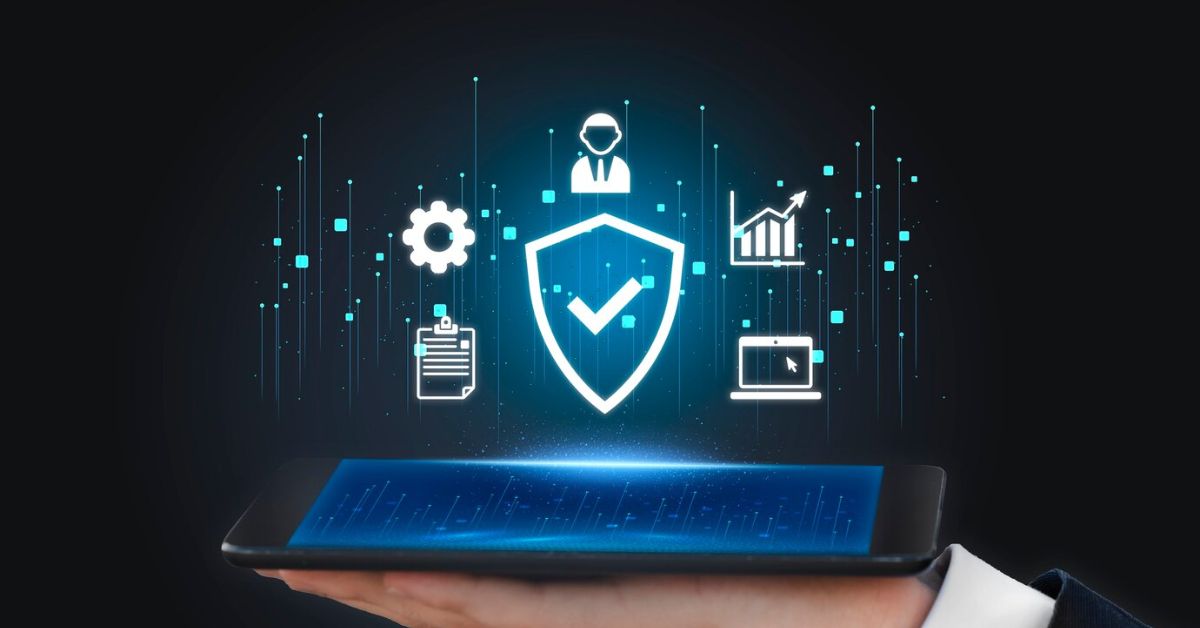In today’s increasingly connected digital landscape, protecting business information is no longer optional—it’s essential. Cyberattacks, data breaches, and unauthorized access can result in financial loss, reputational damage, and legal penalties. That’s why understanding and implementing effective data security methods is critical for every organization, regardless of size or industry.
At TitanFile, we’ve been at the forefront of secure file sharing and communication solutions. Drawing from recent surveys, industry best practices, and real-world applications, this article highlights proven techniques businesses can use to safeguard sensitive data.
The Importance of Data Security in the Digital Age
The volume of data generated and stored by companies has exploded over the past decade. While this data fuels innovation and better decision-making, it also creates vulnerabilities. According to a 2024 cybersecurity survey conducted by TitanFile and industry partners:
- 63% of businesses reported at least one data breach or security incident in the past year.
- 78% of those affected cited human error as a leading cause.
- 51% of SMBs said they lacked a formal cybersecurity policy.
These statistics show that data security must be proactive, multilayered, and continuously updated.
Key Categories of Data Security Methods
Effective data protection involves a mix of technologies, policies, and practices. Here are the main categories that every organization should consider:
- Physical Security
- Administrative Controls
- Technical Safeguards
- User Education and Awareness
Let’s explore each of these areas in detail.
1. Physical Security: The First Line of Defense
While cybersecurity often gets the spotlight, physical security remains a foundational element of data protection.
Techniques to Enhance Physical Security:
- Restrict access to servers and devices using badge systems or biometric access.
- Install surveillance systems in sensitive areas like data centers.
- Use secure disposal methods for old hard drives, documents, and storage media.
- Lock away laptops and mobile devices when not in use, especially in shared or public workspaces.
Even the most sophisticated cybersecurity tools won’t help if someone can physically walk out with a hard drive full of confidential information.
2. Administrative Controls: Establishing Strong Governance
Administrative controls help establish the rules for how data should be handled and who can access it.
Recommended Administrative Measures:
- Data Classification Policies: Identify and label sensitive information based on its confidentiality level.
- Access Control Policies: Ensure users have access only to the data necessary for their role (principle of least privilege).
- Regular Risk Assessments: Conduct periodic audits to identify vulnerabilities and compliance gaps.
- Vendor Risk Management: Evaluate the security protocols of third-party vendors handling your data.
- Incident Response Plan: Establish a documented plan for managing and reporting security breaches.
By defining clear policies and procedures, businesses create a secure foundation for data handling.
3. Technical Safeguards: The Core of Digital Protection
Technical measures are the heart of modern data security. These include software, hardware, and system configurations designed to protect information.
Proven Technical Data Security Methods:
- End-to-End Encryption:
- Encrypt files during transmission and storage to prevent unauthorized access.
- Tools like TitanFile offer secure file sharing with industry-standard encryption.
- Multi-Factor Authentication (MFA):
- Require multiple credentials (e.g., password + mobile code) to verify identity.
- Reduces the risk of unauthorized logins.
- Firewalls and Intrusion Detection Systems (IDS):
- Monitor network traffic for signs of malicious activity.
- Block untrusted traffic before it reaches your system.
- Data Loss Prevention (DLP) Solutions:
- Prevent employees from accidentally or intentionally leaking sensitive data.
- Monitor file movements and content sharing.
- Endpoint Protection:
- Install antivirus and anti-malware software on all devices.
- Keep operating systems and applications updated.
- Regular Backups:
- Schedule automatic backups and store copies off-site or in the cloud.
- Ensure quick recovery in case of ransomware or hardware failure.
- Secure File Transfer Protocols:
- Use HTTPS, SFTP, or secure file sharing platforms like TitanFile to transmit data safely.
4. User Education and Awareness: The Human Factor
Technology alone isn’t enough—your team must be well-informed and vigilant. Human error continues to be a leading cause of data breaches.
Best Practices for Security Awareness Training:
- Conduct regular cybersecurity training sessions tailored to different roles.
- Use phishing simulations to test and improve employee response.
- Educate on password hygiene, such as creating strong passwords and avoiding reuse.
- Teach safe remote work practices, especially when using public Wi-Fi.
- Encourage reporting of suspicious activity without fear of reprisal.
Organizations that invest in user awareness can drastically reduce the risk of internal threats and accidental breaches.
5. Cloud Security: Protecting Data Beyond Your Walls
As businesses increasingly rely on cloud services, cloud security has become a top priority. Misconfigured cloud storage can lead to data leaks and regulatory issues.
Strategies for Securing Cloud Environments:
- Choose cloud vendors with strong compliance credentials, such as ISO 27001 or SOC 2 Type II.
- Enable logging and auditing to track who accessed what and when.
- Encrypt data before uploading it to the cloud.
- Review and update user permissions regularly.
- Integrate cloud access security brokers (CASBs) to monitor cloud use and detect anomalies.
TitanFile, for example, uses a secure, encrypted cloud infrastructure to help organizations share files while maintaining complete control over data access.
6. Compliance and Legal Considerations
Data protection isn’t just a best practice—it’s often a legal requirement. Depending on your location and industry, you may be subject to regulations such as:
- GDPR (General Data Protection Regulation – EU)
- HIPAA (Health Insurance Portability and Accountability Act – US healthcare)
- PIPEDA (Personal Information Protection and Electronic Documents Act – Canada)
- CCPA (California Consumer Privacy Act – US)
Tips for Compliance:
- Appoint a data protection officer (DPO) or equivalent to oversee compliance efforts.
- Maintain proper records of how data is collected, used, and stored.
- Provide user rights such as access, correction, or deletion of personal data.
- Report breaches within the legally required timeframes.
Non-compliance can result in significant fines and reputational damage.
7. Insider Threats and Zero Trust Models
Not all threats come from the outside. Insider threats—whether intentional or accidental—can be the most difficult to detect.
Combating Insider Threats:
- Implement Zero Trust Architecture: Assume no user or device is trustworthy by default. Every access request must be authenticated and authorized.
- Monitor user behavior analytics (UBA): Detect anomalies like unusual login times or large data downloads.
- Segment your network: Restrict access between departments or projects to minimize the risk of lateral movement.
- Revoke access immediately when an employee leaves or changes roles.
The Zero Trust model helps minimize potential damage from internal threats.
8. Future Trends in Data Security
Cybersecurity is an evolving field. Staying ahead of threats requires keeping an eye on emerging technologies and practices.
Trends to Watch:
- AI-powered threat detection: Machine learning tools can identify and respond to threats in real-time.
- Quantum-resistant encryption: Preparing for the future of computing.
- Behavioral biometrics: Authentication based on typing patterns, mouse movements, or even keystroke rhythm.
- Secure collaboration platforms: Like TitanFile, these allow safe, compliant communication across industries.
Being proactive about upcoming changes in cybersecurity will give your business a competitive and secure edge.
Why Choose TitanFile for Data Security?
At TitanFile, we understand the value of your data and the importance of privacy. Our secure file sharing and communication platform was designed with compliance, usability, and enterprise-grade security at its core.
TitanFile Security Features:
- End-to-end encryption for all files and messages.
- Compliance-ready with HIPAA, PIPEDA, and more.
- Role-based access control for managing user permissions.
- Audit logs to track file activity.
- Custom branding and secure client portals.
Whether you’re a law firm, healthcare provider, financial institution, or enterprise, TitanFile provides a secure and intuitive platform to safeguard your most valuable information.
Final Thoughts
Your organization’s data is one of its most valuable assets—and also one of its most vulnerable. By adopting a combination of physical, administrative, technical, and educational data security methods, you can create a strong, multilayered defense against modern threats.
Don’t wait for a breach to take action. Review your current security posture, identify gaps, and invest in proven tools like TitanFile to ensure that your business information remains safe, private, and compliant.











